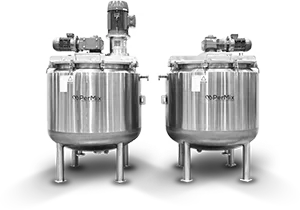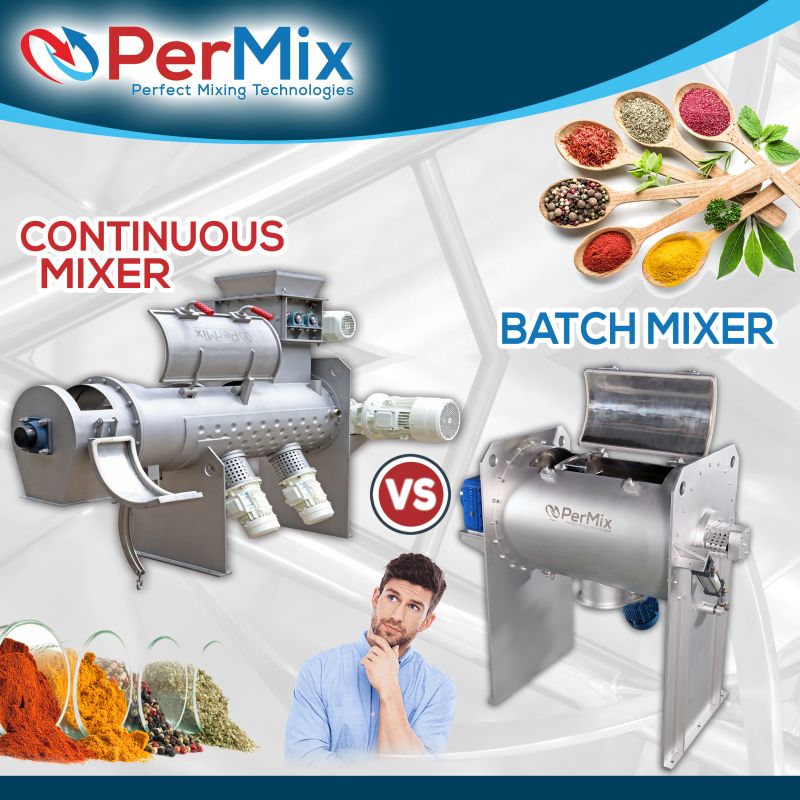Industrial Mixers
PerMix News & Updates


When it comes to mixing there are two major types of mixers, batch mixers and continuous mixers. A batch mixer is a stand-alone vessel in which all the ingredients are loaded and then agitated until homogeneously dispersed or mixed; the mixture is then taken out. Where as in a continuous mixer the machine is fed ingredients in correct proportions; the ingredients are mixed with intense agitation, and the mixture is discharged to the next piece of equipment.
Mixing is one of the most common processes. It’s a step in the production of most of the product we use in our day to day life. Mixing can be overdone for instance if cake batter is overmixed it creates a dense, weak cake. Similarly, when the powders of different densities and particle size are overmixed, the powders can unmix or segregate.
A continuous mixer agitates and moves the ingredients through the vessel, mixing them in one pass. In-order to properly mix all the ingredients in one pass, most of the continuous mixers mix small amounts of ingredients intensely. Due to it operating continuously, a continuous mixer can also mix larger quantities of ingredients as compared to a batch mixer
A batch mixer is used for relatively small operations. It operates in one of the two ways, by either using an agitator that’s fitted into the mixer vessel to rotate and mix the ingredients, or by rotating the vessel itself to mix the ingredients. Different types of batch mixers may include ribbon mixers, vertical orbiting scew mixers, pan mixers, kneaders, and tumbling mixers.
When it comes to choosing between a batch or a continuous mixer, we need to consider different factors in your mixing machine as well as the benefits of each type of mixer. Sometimes making the choice will be clear, sometimes not. For example, if you want to mix seven-eight ingredients to make 20 pounds of finished mixture every hour and then eventually change the color of the mixture, the batch mixture is a good choice. If you wish to mix two ingredients together to make several tons of mixture, a continuous mixer is best. However, if you wish to mix three-four ingredients to make three or four different mixtures in reasonably large quantities, you should try considering other factors before deciding whether a batch or continuous mixer is best
#mixing#permix#permixmixers#engineering#mixingtechnology#technology#innovation
